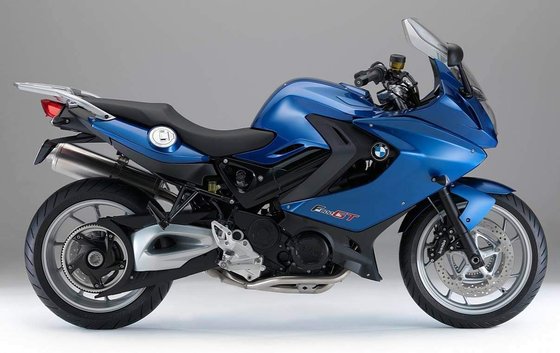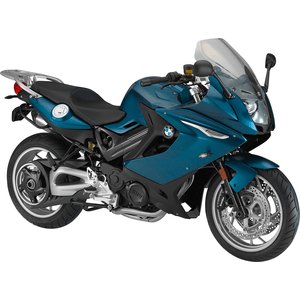BMW F 800 GT (2013–2016): A Refined Sport-Touring Experience Revisited
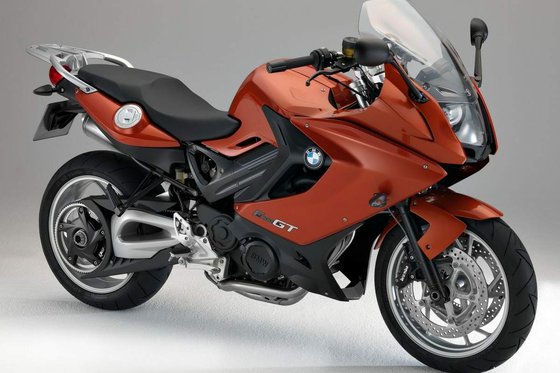
Introduction
The BMW F 800 GT, produced from 2013 to 2016, represents a pivotal shift in BMW’s approach to the sport-touring segment. Positioned as the successor to the F 800 ST, the GT model trades a fraction of its predecessor’s sportiness for enhanced touring comfort and practicality. Designed for riders who crave long-distance capability without sacrificing the thrill of a responsive engine, the F 800 GT strikes a balance that’s hard to ignore. After spending a week with this machine, it’s clear why it remains a compelling choice in the used market today—a blend of German engineering, adaptability, and understated elegance.
Design & Ergonomics: Touring, Refined
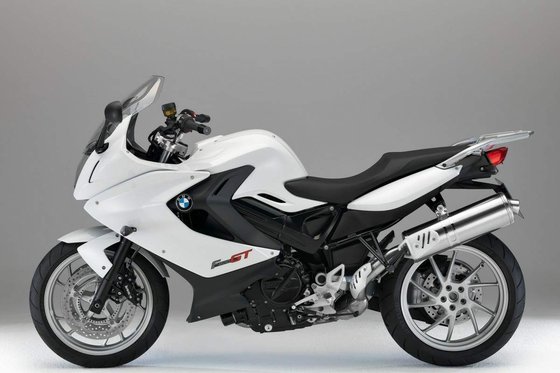
The F 800 GT’s design leans into its “Gran Turismo” ethos with a sleeker fairing, a taller windscreen, and a more relaxed riding posture. The bodywork is purposeful rather than flashy, with clean lines that prioritize aerodynamic efficiency. The smoked turn indicators and minimalist tail section give it a modern look, even by today’s standards.
Ergonomics:
BMW reshaped the rider triangle to favor comfort. The handlebars are 30 mm higher and closer to the rider, while the footpegs sit 10 mm lower and slightly forward. This creates a natural, upright position that’s easy on the shoulders and wrists—ideal for multi-hour rides. The seat, adjustable between 765 mm (30.1") and 820 mm (32.3"), accommodates shorter inseams without sacrificing support. Optional Comfort and Low seats add further customization.
Wind Protection:
The reshaped fairing and adjustable windscreen deflect windblast effectively at highway speeds. Buffeting is minimal, and the cockpit remains surprisingly quiet, making conversations with a passenger possible even at 120 km/h (75 mph).
Luggage System:
BMW’s optional 51-liter saddlebags integrate seamlessly with the bike’s lines. They’re lockable, water-resistant, and large enough to swallow a full-face helmet. The mounting system is tool-free, emphasizing practicality for riders who value spontaneity.
Engine & Performance: Smooth Operator
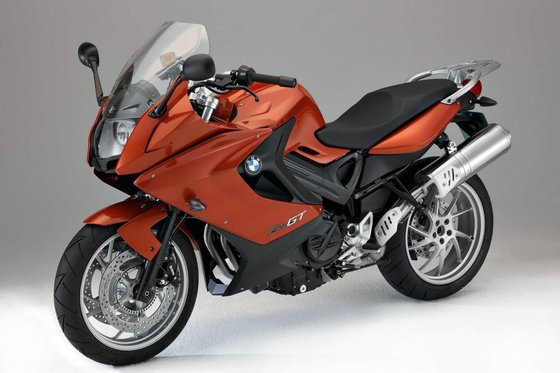
At the heart of the F 800 GT lies a 798 cc liquid-cooled parallel twin, producing 90 hp (66 kW) at 8,000 rpm and 86 Nm (63 lb-ft) of torque at 5,800 rpm. This engine is a master of duality: docile enough for city commutes yet eager when the road opens up.
Power Delivery:
Throttle response is crisp, thanks to revised fuel injection mapping over the ST model. The torque curve is flat and accessible, with meaningful pull from 3,000 rpm onward. Roll-on acceleration from 100 km/h (62 mph) in sixth gear is confident, making overtaking effortless. The belt drive (a standout feature) transmits power smoothly, eliminating the chain maintenance hassle while reducing drivetrain lash.
Fuel Efficiency:
BMW claims 3.4 L/100 km (69 mpg), but real-world riding nets closer to 4.0 L/100 km (59 mpg)—still impressive for a 90 hp machine. The 15-liter (4 US gal) tank provides a 350–400 km (217–249 mi) range, perfect for touring.
Vibration & Refinement:
The counterbalanced twin emits a muted growl through the stock exhaust, with minimal vibration at cruising RPMs. Opting for the Akrapovič slip-on (a popular upgrade) adds a throatier note and shaves 1.7 kg (3.7 lbs), sharpening the bike’s character without compromising comfort.
Handling & Dynamics: Confidence in Corners
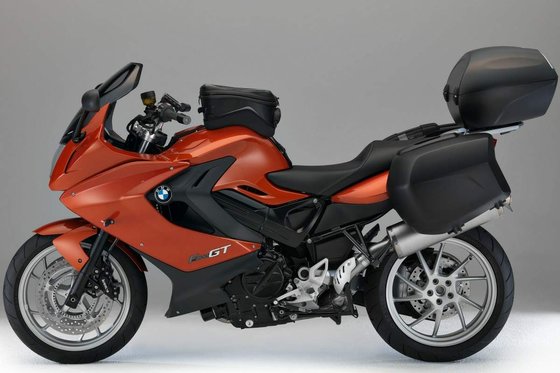
Weighing 213 kg (470 lbs) wet, the F 800 GT feels nimble for a tourer. The chassis—a bridge-type aluminum frame with a load-bearing engine—provides a rigid foundation, while the 43 mm Marzocchi fork and single-sided swingarm strike a balance between stability and agility.
Suspension Tuning:
The suspension offers 125 mm (4.9") of travel at both ends, tuned for compliance over rough pavement. The rear shock features hydraulic preload adjustment (via a handwheel) and optional ESA (Electronic Suspension Adjustment), allowing on-the-fly damping changes between Comfort, Normal, and Sport modes.
Braking Performance:
Dual 320 mm front discs gripped by four-piston calipers deliver strong, progressive stopping power. The ABS (standard post-2013) intervenes subtly, inspiring confidence in wet conditions.
Tires & Grip:
The 120/70-ZR17 front and 180/55-ZR17 rear tires offer ample grip for spirited riding. Push hard into a corner, and the GT responds with neutral steering and minimal drama. The longer swingarm (vs. the ST) enhances stability at speed, though it sacrifices some flickability compared to pure sport bikes.
Comfort & Technology: Touring-Focused Features
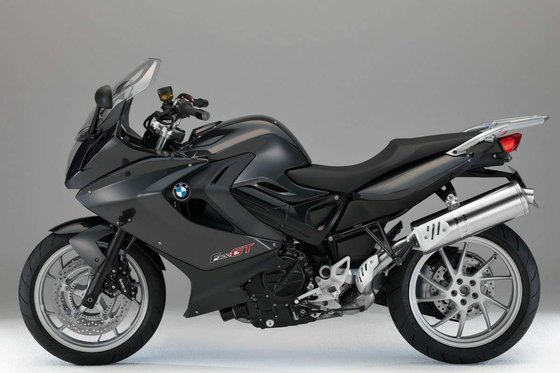
Instrument Cluster:
The analog tachometer and digital speedometer are easy to read at a glance. A multifunction display shows fuel economy, range, and ambient temperature. Optional upgrades include heated grips and a tire-pressure monitor.
Optional Tech:
- ASC (Automatic Stability Control): Acts as a traction control system, reducing rear wheel slip on loose surfaces.
- Navigator IV Integration: A dedicated mount on the handlebar clamp allows for seamless GPS navigation.
Passenger Comfort:
The rear seat is generously padded, and the passenger footpegs are vibration-free. Combined with the relaxed riding position, it’s a bike that encourages two-up adventures.
Competition: How Does It Stack Up?
The F 800 GT faced stiff competition in the mid-weight sport-touring segment:
- Yamaha Tracer 900 (2015–2016):
- Pros: Triple-cylinder engine (847 cc, 115 hp), sharper handling.
- Cons: Less wind protection, no belt drive, basic suspension.
-
Verdict: The Tracer is livelier, but the BMW excels in refinement and touring ergonomics.
-
Triumph Tiger 800 XRx (2015):
- Pros: Off-road capability, taller suspension, 95 hp triple.
- Cons: Heavier (214 kg), higher seat (810–880 mm).
-
Verdict: The Tiger suits adventurers; the GT is a tarmac specialist.
-
Kawasaki Versys 650 (2013–2016):
- Pros: Lower price point, 649 cc twin, 21 L fuel tank.
- Cons: 68 hp lacks punch, basic tech package.
- Verdict: A budget-friendly alternative but less polished.
The BMW’s Edge:
Superior build quality, belt drive reliability, and optional tech like ESA/ASC make the F 800 GT a premium choice. However, its smaller engine and higher cost deterred buyers seeking raw power or value.
Maintenance: Keeping the GT in Prime Condition

- Oil Changes:
- Use SAE 15W-50 API SJ oil (3.0 L with filter). Replace every 10,000 km (6,200 mi).
-
MOTOPARTS.store Pick: Liqui Moly 15W-50 Synthetic.
-
Belt Drive:
- Inspect every 20,000 km (12,400 mi) for cracks or wear. No lubrication needed.
-
Upgrade Tip: Consider a Gates Carbon Drive Belt for longevity.
-
Brake Fluid:
-
Flush DOT 4 fluid every 2 years. Check pads for wear—320 mm discs are costly to replace.
-
Cooling System:
-
Use BMW-approved “Wasser+” coolant. Check hoses for leaks during pre-ride inspections.
-
Spark Plugs:
-
NGK DCPR8E (gap 0.8–0.9 mm). Replace every 16,000 km (10,000 mi).
-
Tire Pressure:
- 2.5 bar (36 psi) front / 2.9 bar (42 psi) rear for optimal grip and mileage.
Final Thoughts
The BMW F 800 GT is a testament to the idea that “less is more.” It forgoes brute strength in favor of balance, offering a riding experience that’s both engaging and effortless. While newer models have eclipsed it in tech, the GT remains a shrewd buy for riders prioritizing comfort, reliability, and understated sophistication. Whether carving mountain passes or logging highway miles, this BMW proves that the journey truly matters as much as the destination.
Ready to enhance your F 800 GT? Explore our curated selection of BMW upgrades at MOTOPARTS.store—where every ride deserves a personal touch.
